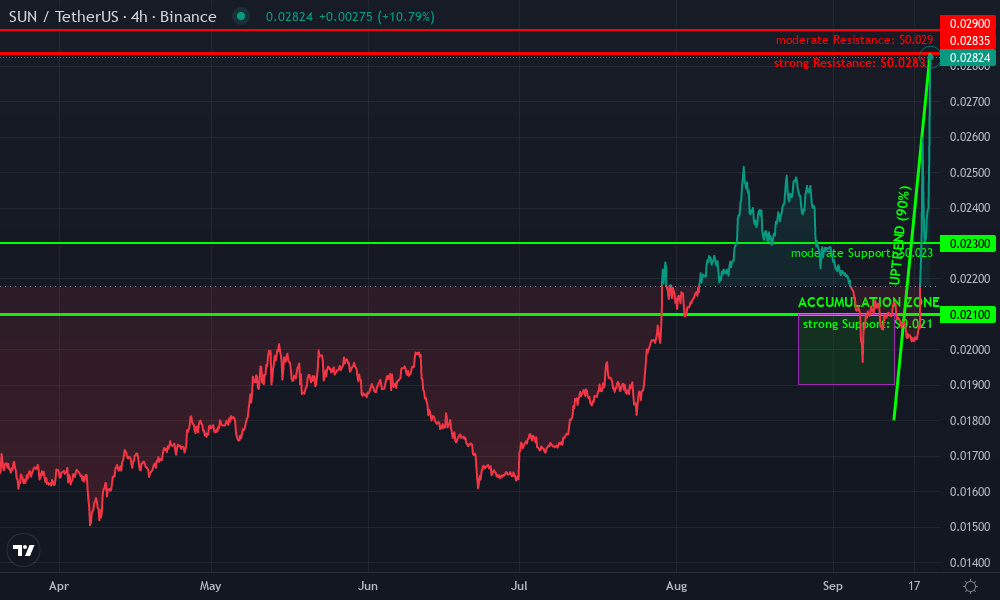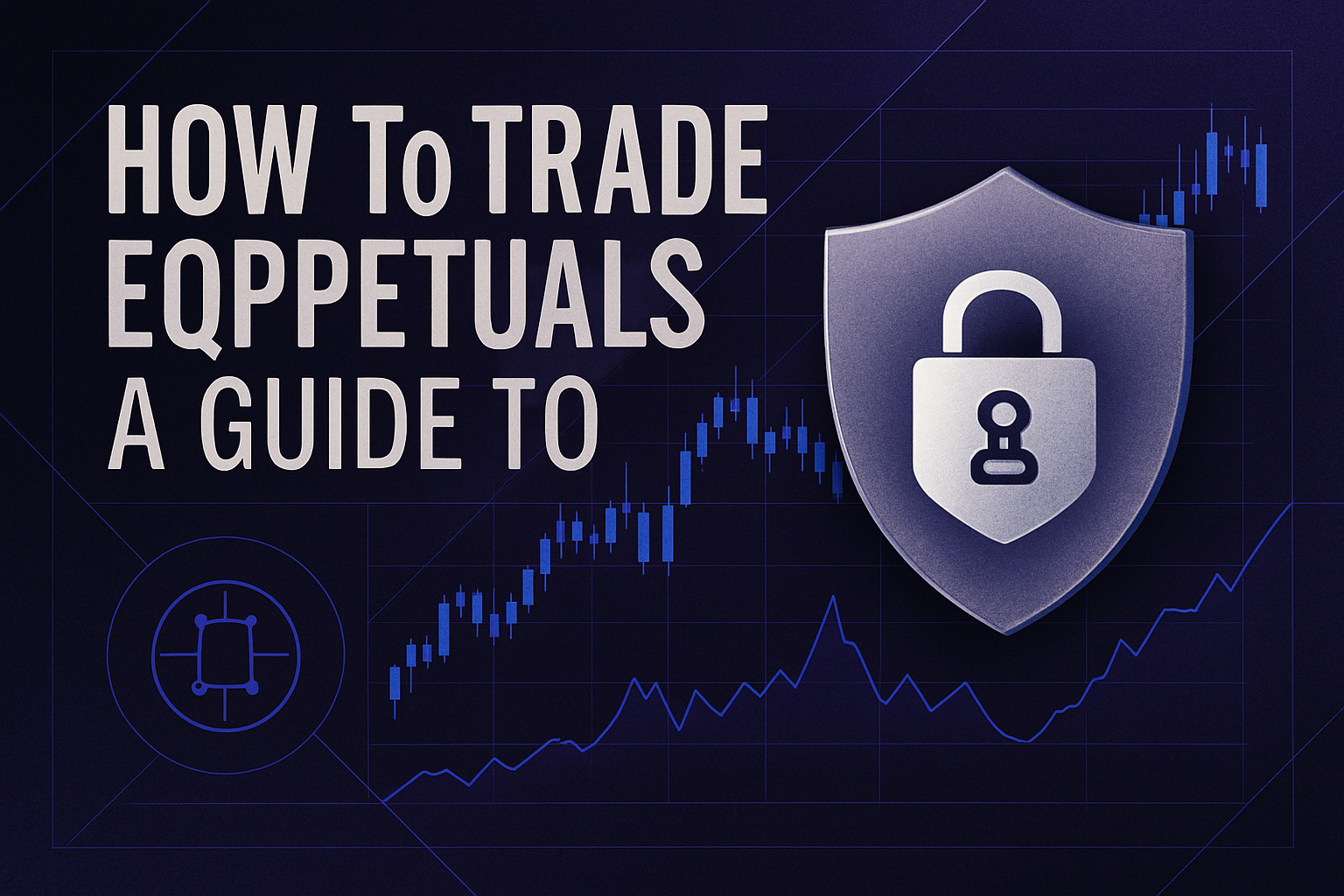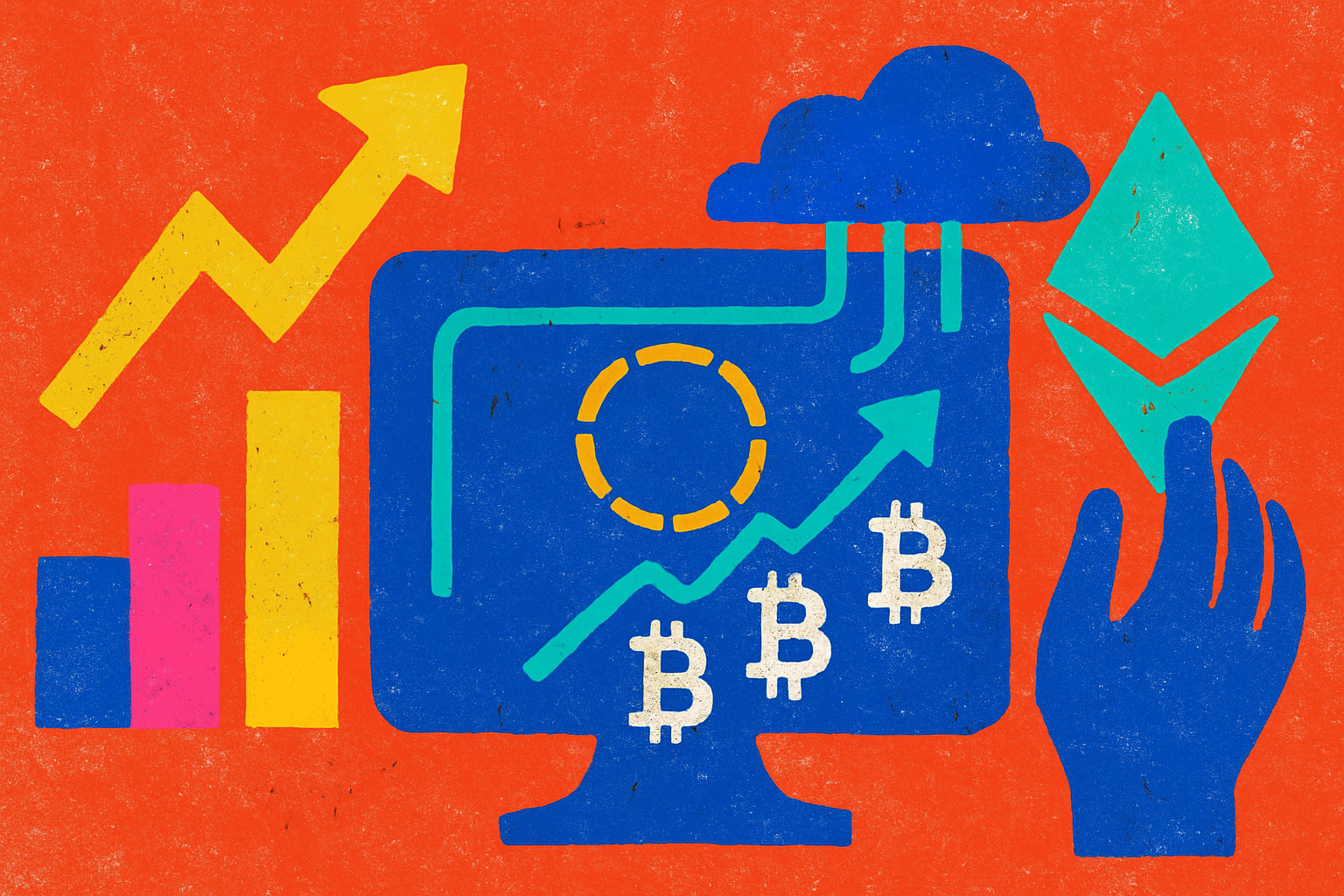
Perpetual decentralized exchanges (perp DEXs) are reshaping the trading landscape on Tron and BNB Chain, making high-leverage, low-fee perpetual contracts accessible to a global audience. The recent surge in both ASTER and SUN tokens underscores the momentum behind their respective platforms: Aster DEX on BNB Chain and SunPerp on Tron. Both exchanges are capitalizing on network-specific advantages – lightning-fast block times, negligible fees, and robust liquidity – to challenge incumbents and attract new users.
SunPerp: Tron’s Flagship Perpetual DEX
SunPerp has quickly carved out a niche as Tron’s premier perpetual DEX. By leveraging Tron’s high throughput and minimal transaction costs, SunPerp provides a frictionless environment for perpetual trading. Its native integration with TRX and other Tron-based assets makes onboarding seamless for existing ecosystem participants. The platform offers leveraged trading with an intuitive interface, catering to both DeFi newcomers and experienced traders seeking cost efficiency.

The appeal is clear: with average transaction fees hovering near $0.01 per trade, SunPerp enables active strategies that would be cost-prohibitive elsewhere. This has led to rapid growth in trading volume and user adoption across the Tron DeFi ecosystem.
Aster DEX: Market Share Leader on BNB Chain
If SunPerp represents Tron’s answer to perpetuals, Aster is BNB Chain’s breakout perp DEX story of 2025. Backed by influential figures like CZ Binance, Aster has amassed over $350 million in Total Value Locked (TVL) since its Token Generation Event (TGE) on September 17,2025. The platform now commands nearly 20% of the entire perpetual DEX market share by monthly volume – a remarkable feat considering its short time in the spotlight.
Aster’s dual-mode architecture is central to its appeal:
- Simple Mode: One-click leveraged trades (up to 1001x), MEV protection
- Pro Mode: Advanced order book UI, ultra-low fees (0.01% maker/0.035% taker), cross-chain support
This flexibility attracts both casual users seeking simplicity and professionals demanding granular control over execution costs.
Key Benefits of Using Aster DEX Over Traditional CEXs
-

Non-Custodial Trading: Aster DEX allows users to retain full control of their funds at all times, eliminating the risk of centralized exchange (CEX) hacks or withdrawals being frozen.
-

Ultra-Low Trading Fees: With maker fees at just 0.01% and taker fees at 0.035%, Aster offers significantly lower costs compared to most CEXs, maximizing trader profitability.
-

Advanced MEV Protection: Aster implements Miner Extractable Value (MEV) protection, reducing the risk of front-running and sandwich attacks that can impact trade execution on decentralized platforms.
-

High Leverage and Flexible Trading Modes: Users can access up to 1001x leverage in Simple Mode or utilize Pro Mode for advanced order book trading, catering to both beginners and professionals.
-

24/7 Stock Perpetual Contracts: Unlike most CEXs, Aster provides around-the-clock trading for stock perpetual contracts, expanding access to global markets beyond crypto assets.
-

Multi-Chain Accessibility: Aster operates across multiple EVM-compatible chains and Solana, enabling seamless trading and asset movement without being locked into a single ecosystem.
-

Transparent On-Chain Operations: All trades and transactions on Aster are recorded on-chain, ensuring transparency and auditability not always possible with centralized exchanges.
The Low-Fee Revolution: Why Traders Are Migrating
The rise of SunPerp and Aster reflects a broader migration toward low-fee perpetual trading solutions on scalable blockchains. With BNB Chain processing transactions at just $0.01 apiece and block times now at 0.75 seconds (source), high-frequency strategies are no longer exclusive to centralized venues or whales with deep pockets.
This shift is quantifiable: BNB Chain accounted for a staggering 40% of global DEX trading volume in May 2025, translating to $178 billion monthly turnover. Meanwhile, Tron’s DeFi ecosystem continues expanding as platforms like SunPerp make leveraged synthetic exposure more accessible than ever before.
For traders, these advances mean more than just lower costs. Competition among perpetual DEXs is driving innovation in user experience, risk management, and asset diversity. Aster’s recent airdrop campaign, for instance, has energized its community and incentivized liquidity provision, while SunPerp’s seamless Tron integration is bringing new users into the perpetuals market at record speed. The net effect: users benefit from deeper books, tighter spreads, and a growing menu of tradable assets.
Synthetic Perp Stocks: Expanding Beyond Crypto
One of the most significant trends emerging from this ecosystem is the rise of synthetic perp stocks. Platforms like Aster are leading the way by offering 24/7 perpetual contracts on major equities and indices, blurring the line between traditional finance and DeFi. This gives users global access to stock-like exposure with all the advantages of blockchain settlement: instant execution, transparent pricing, and non-custodial control.
For example, Aster’s stock perps allow traders to long or short popular U. S. tech stocks around the clock without ever leaving the BNB Chain environment. The MEV-free execution model further reduces slippage risk, a critical factor for high-leverage strategies and larger position sizes.
Sun Token Technical Analysis Chart
Analysis by Owen Shepard | Symbol: BINANCE:SUNUSDT | Interval: 4h | Drawings: 6
Technical Analysis Summary
This chart of SUN/USDT on Binance for 2025 shows a dramatic bullish breakout following a period of accumulation and consolidation. The price surged from just above $0.02100 to $0.02835, a move of over 30% in a short span, which coincides with major ecosystem and DEX developments. To analyze this, draw a horizontal support line at the $0.02100 zone, which previously acted as a base. Place a strong resistance line at $0.02835 (current high), as this is the latest peak and may face profit-taking. Draw an uptrend line from the September low near $0.01800 to the current price, capturing the sharp rally. Highlight the recent vertical breakout with an arrow marker. Use rectangles to mark the consolidation zone between $0.01900–$0.02100 (late August–mid September), and a price range tool to visualize the distribution zone in early August around $0.02400–$0.02550. Mark possible entry zones near $0.02300 (on retest) and exit zones at $0.02800–$0.02900 (profit target, as risk increases at new highs).
Risk Assessment: medium
Analysis: The breakout is technically well supported, with strong fundamentals and volume. However, the parabolic nature of the move increases risk of a sharp retracement. Wait for confirmation of support before committing significant capital.
Owen Shepard’s Recommendation: Let this rally play out; look for a retest or consolidation above $0.02300 for optimal medium-risk entries. Avoid chasing at highs. Use a stop-loss below $0.02100 to protect against failed breakout.
Key Support & Resistance Levels
📈 Support Levels:
-
$0.021 – Strong support, former resistance that was broken decisively during the breakout. Likely pullback area.
strong -
$0.023 – Intermediate support, potential retest zone if price retraces after the spike.
moderate
📉 Resistance Levels:
-
$0.028 – Immediate resistance at the new local high. Watch for possible reversal or consolidation.
strong -
$0.029 – Psychological round number resistance just above current high.
moderate
Trading Zones (medium risk tolerance)
🎯 Entry Zones:
-
$0.023 – Potential retest of breakout level; enter on confirmation of support and bullish reversal signal.
medium risk
🚪 Exit Zones:
-
$0.028 – Take profit near current highs as risk of sharp retracement increases after parabolic move.
💰 profit target -
$0.021 – Stop-loss below key support, invalidates breakout thesis if lost.
🛡️ stop loss
Technical Indicators Analysis
📊 Volume Analysis:
Pattern: Likely surge in volume on breakout, confirming strength of move.
Volume likely spiked with the breakout, validating the move and reducing likelihood of a false breakout.
📈 MACD Analysis:
Signal: Likely bullish crossover, given the sharp upside momentum.
MACD probably shows a strong bullish crossover with rising histogram, signaling continued trend strength.
Applied TradingView Drawing Utilities
This chart analysis utilizes the following professional drawing tools:
Disclaimer: This technical analysis by Owen Shepard is for educational purposes only and should not be considered as financial advice.
Trading involves risk, and you should always do your own research before making investment decisions.
Past performance does not guarantee future results. The analysis reflects the author’s personal methodology and risk tolerance (medium).
Security remains a top concern as these platforms scale. Both SunPerp and Aster have invested heavily in smart contract audits and bug bounty programs to protect user funds. Additionally, their non-custodial frameworks mean that traders retain direct ownership of their assets at all times, a stark contrast to centralized exchanges that require deposit custody.
What Sets These Perpetual DEXs Apart?
Key Features of SunPerp and Aster DEX
-

SunPerp: Tron-Native Perpetual DEX — SunPerp is built on the Tron network, leveraging its high throughput and ultra-low transaction fees. It enables leveraged perpetual contract trading with seamless integration of Tron’s native assets, offering a user-friendly interface for both novice and experienced traders.
-

Cost-Effective Trading Environment — By utilizing Tron’s low-fee infrastructure, SunPerp allows users to execute trades at a fraction of the cost compared to many Ethereum-based DEXs, making it attractive for high-frequency and retail traders alike.
-

Aster: Multi-Chain Perpetual and Spot Trading — Aster operates on BNB Chain and other EVM-compatible chains, as well as Solana, providing both perpetual futures and spot trading in a non-custodial manner. Its advanced infrastructure supports cross-chain liquidity and accessibility.
-

Dual Trading Modes: Simple & Pro — Aster offers a Simple Mode for one-click leveraged trades (up to 1001x, with MEV protection) and a Pro Mode featuring an order book with maker fees as low as 0.01% and taker fees at 0.035%. This flexibility caters to both casual and professional traders.
-

Rapid Growth and Market Share — Following its September 2025 Token Generation Event, Aster achieved $350 million in TVL and captured nearly 20% of the perpetual DEX market share, reflecting strong user adoption and liquidity.
-

MEV Protection and Security — Aster incorporates Miner Extractable Value (MEV) protection in its Simple Mode, helping users avoid front-running and ensuring fairer trade execution.
While competition is fierce, especially as Binance’s endorsement puts Aster in direct contention with Hyperliquid, the low-fee perpetual trading segment still feels early-stage. There is ample room for differentiation via product features (like multi-chain support or advanced order types), governance models (community-driven upgrades), or incentive programs (airdrops and liquidity mining).
The coming months will likely see even greater convergence between crypto-native perpetuals and synthetic stock trading as user demand for diversification grows. For now, SunPerp and Aster stand out for delivering cost-effective access to leverage on two of DeFi’s most scalable chains.
Which perpetual DEX do you use most often?
With SunPerp on Tron and Aster on BNB Chain both making waves in the DeFi space—Aster now holding nearly 20% market share and SunPerp leveraging Tron’s low fees—tell us which platform is your go-to for perpetual trading!
Bottom line: If you’re seeking low-fee perpetual trading with robust liquidity and innovative features, both SunPerp (Tron) and Aster (BNB Chain) deserve close attention this cycle. Their rapid ascent signals not just a changing competitive landscape but also a future where onchain derivatives are accessible to every trader, not just institutions or whales.





